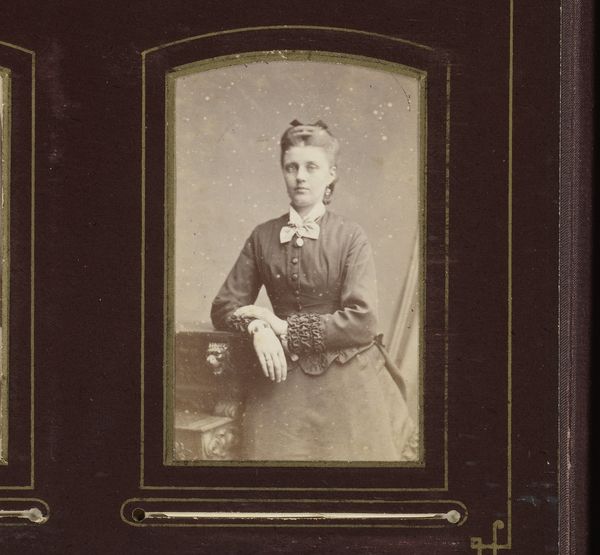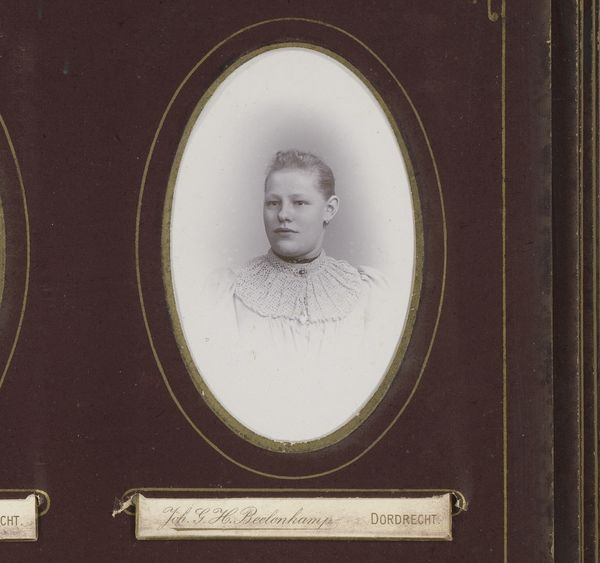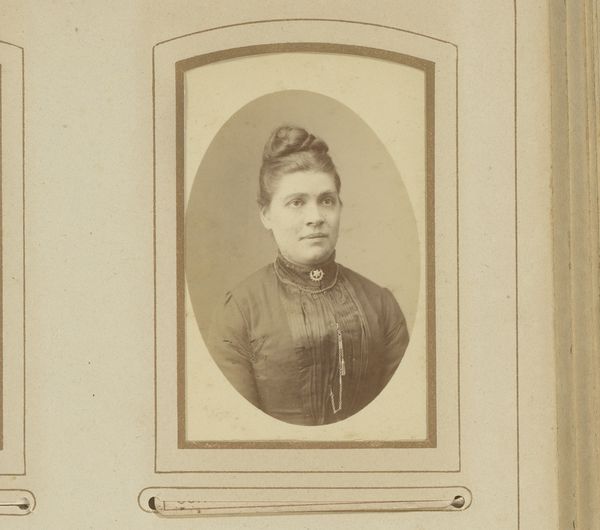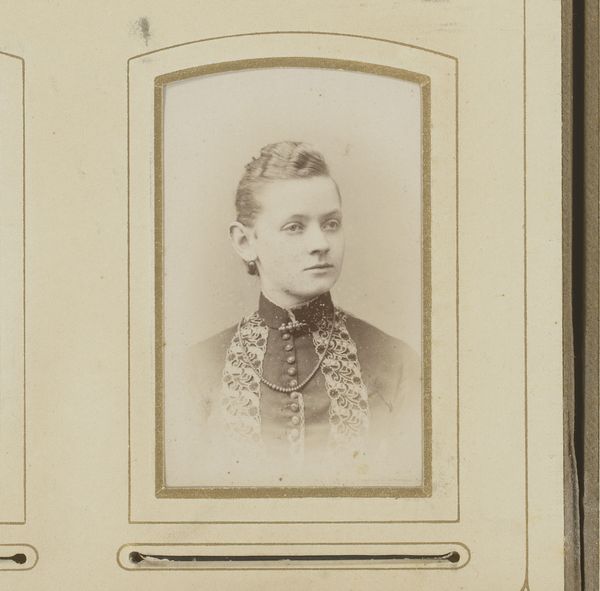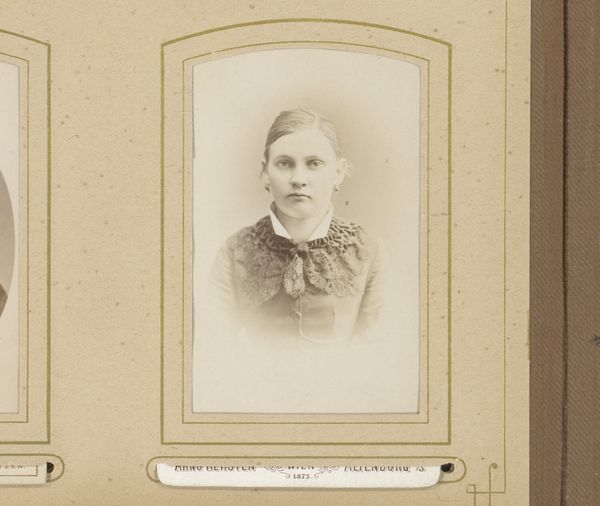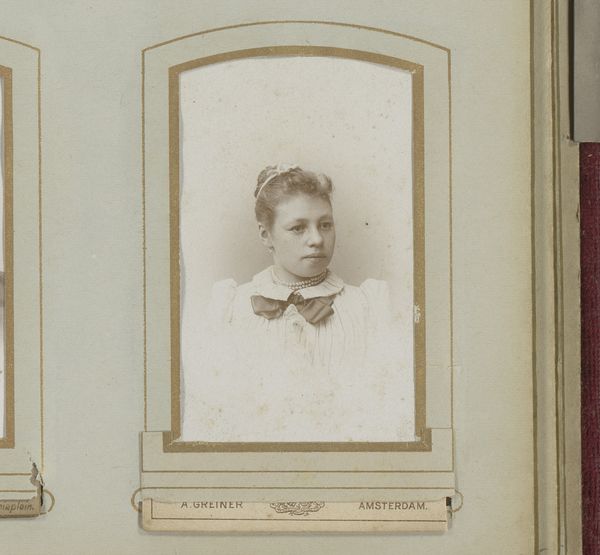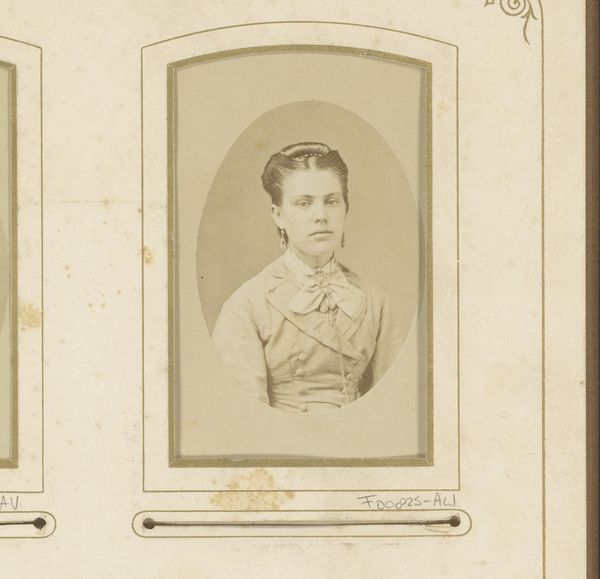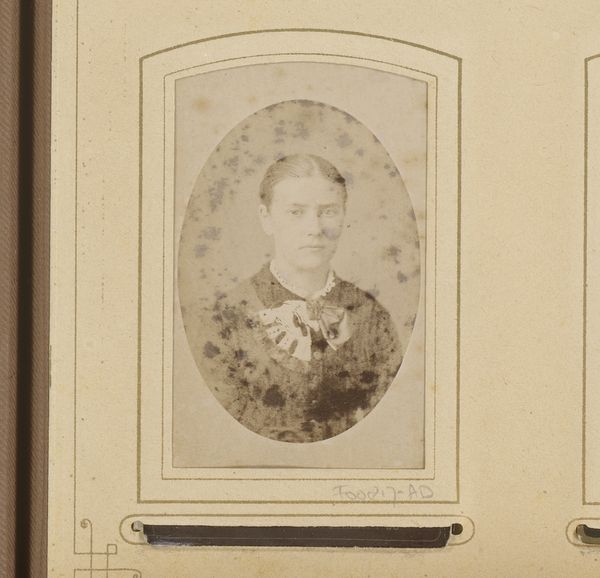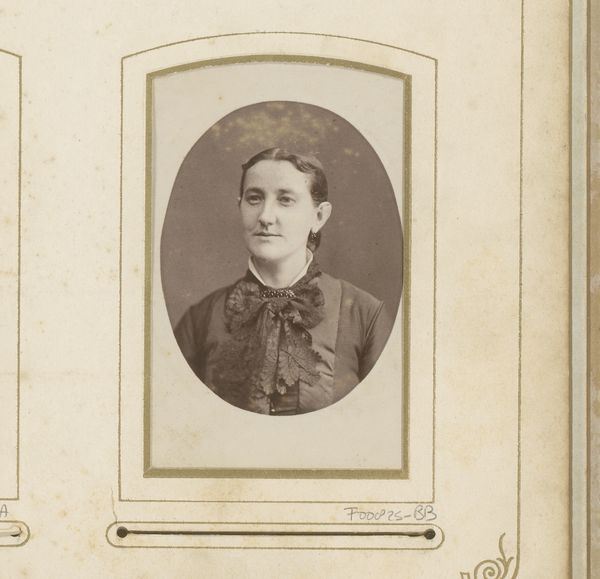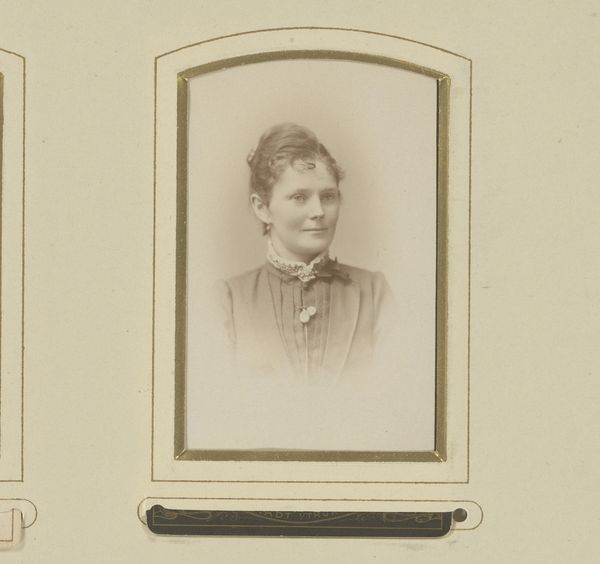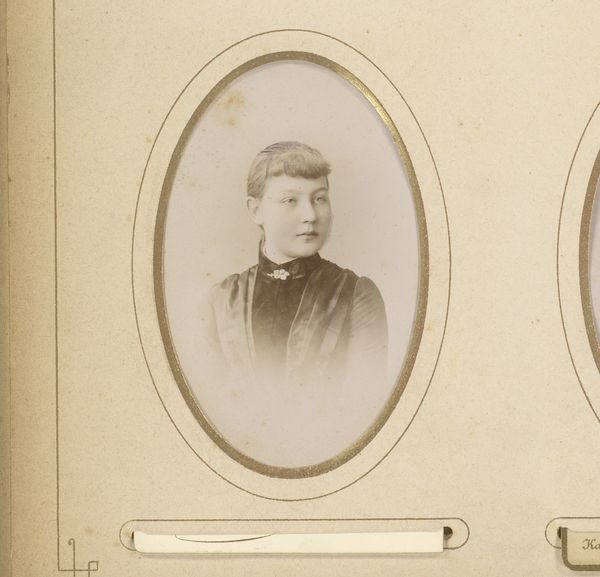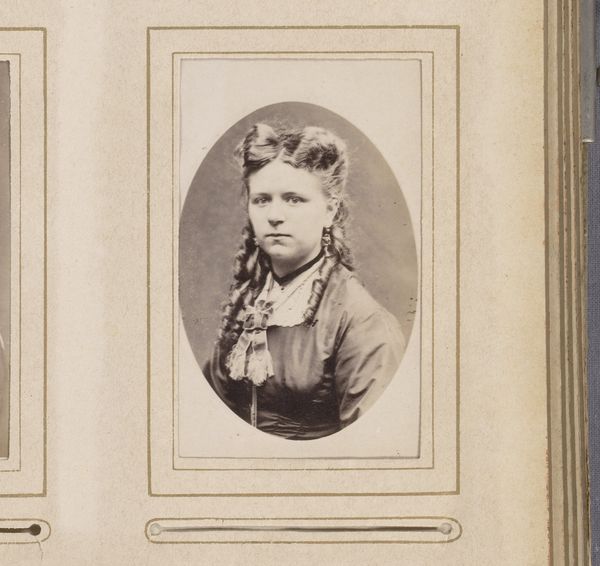
photography
#
portrait
#
photography
#
genre-painting
Dimensions: height 82 mm, width 50 mm
Copyright: Rijks Museum: Open Domain
Editor: This is "Portret van een zittende jonge vrouw," or "Portrait of a Seated Young Woman," dating between 1880 and 1901, by Hendrik Boonstoppel, a photograph that’s part of a larger collection, it seems. It feels very formal, yet also intimate, like a glimpse into a specific person's life. What do you see in this piece from a historical point of view? Curator: I see a carefully constructed image intended for public consumption, shaped by the social norms of the late 19th century. Notice the woman’s posture, her dress, even the pearl necklace. These were signifiers of respectability and status. Consider how the burgeoning middle class used photography to project a desired image. Editor: So, it’s about controlling the narrative? Curator: Precisely! Photography allowed individuals to participate in the construction of their public identity. How does this challenge our understanding of portraiture versus genre paintings from the same era? Do you see any differences in approach? Editor: Well, genre paintings were often idealized. This photograph, while posed, seems to capture a sense of…realism, maybe? Curator: Exactly! It hints at reality while still being highly curated. It also democratized the creation and reception of images, influencing visual culture. The fact that the name "Boonstoppel" is visible, may point to the studio that allowed ordinary people to achieve portraiture, rather than exclusively the well-off who could pay for it. These studios had very political role by democratizing the visual medium. Editor: That's fascinating! It's more than just a portrait; it's a document of social change. Thanks. I would have missed that entirely. Curator: And I am certain, thanks to the genre classification of the photograph, it offers an insight in daily life. It gives meaning to "history" as a broader construct.
Comments
No comments
Be the first to comment and join the conversation on the ultimate creative platform.
